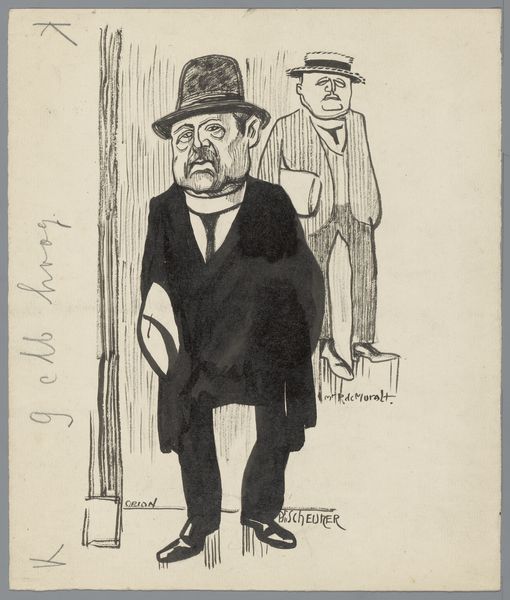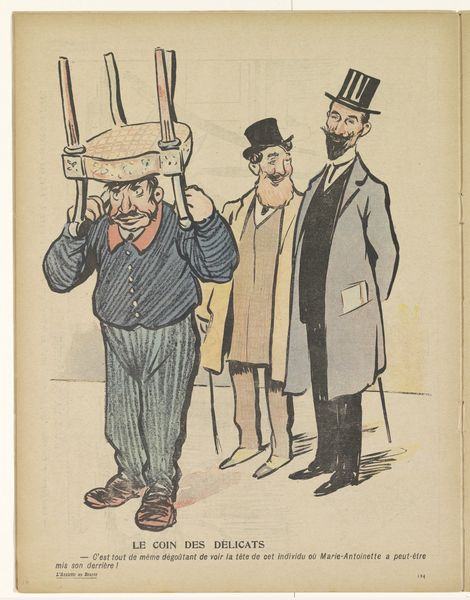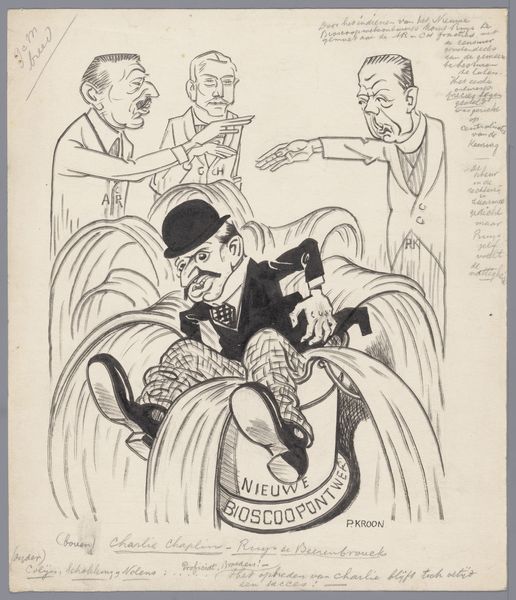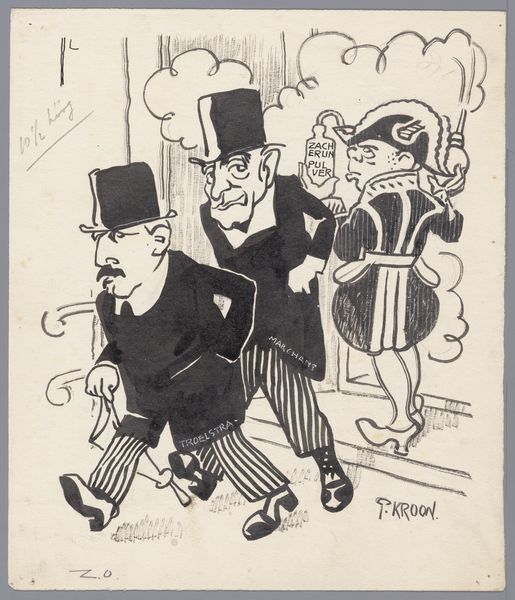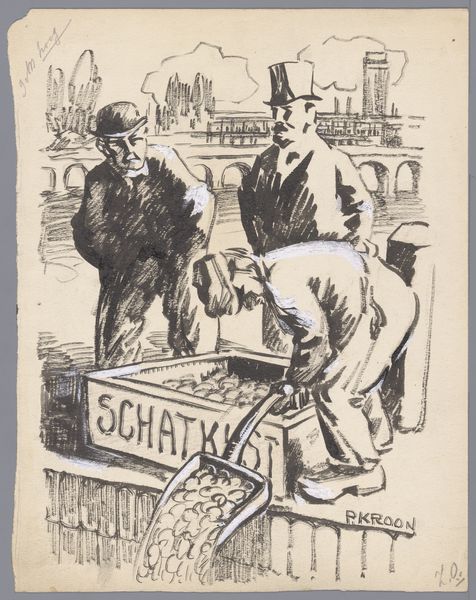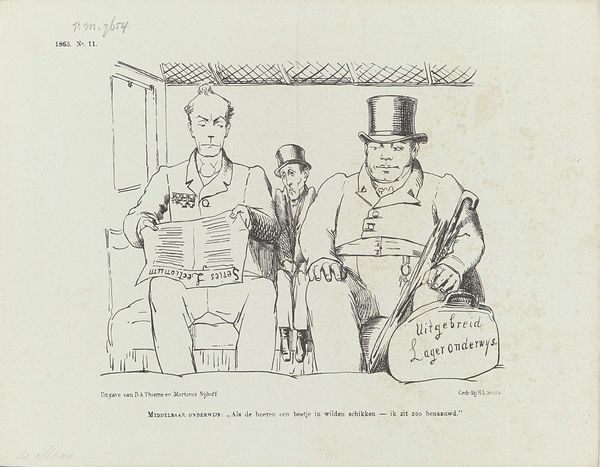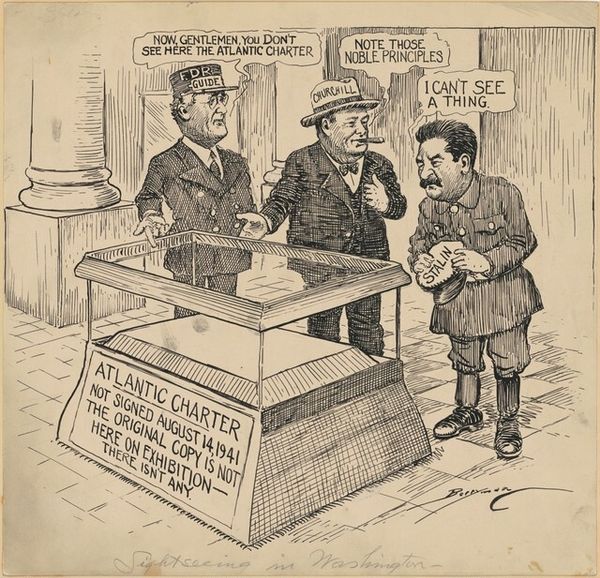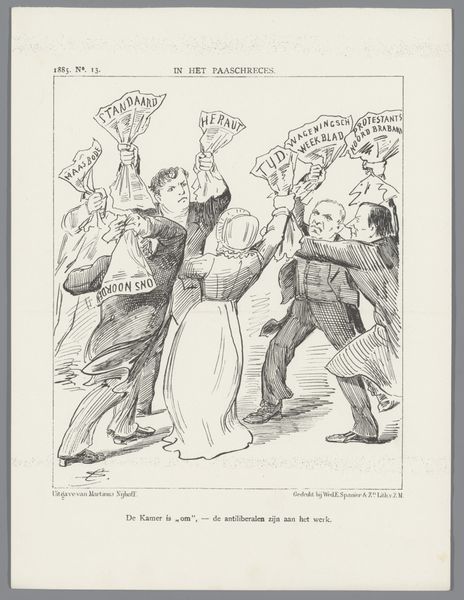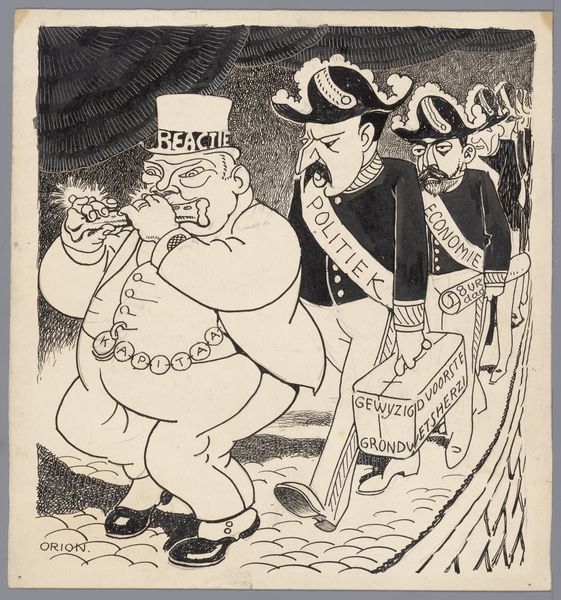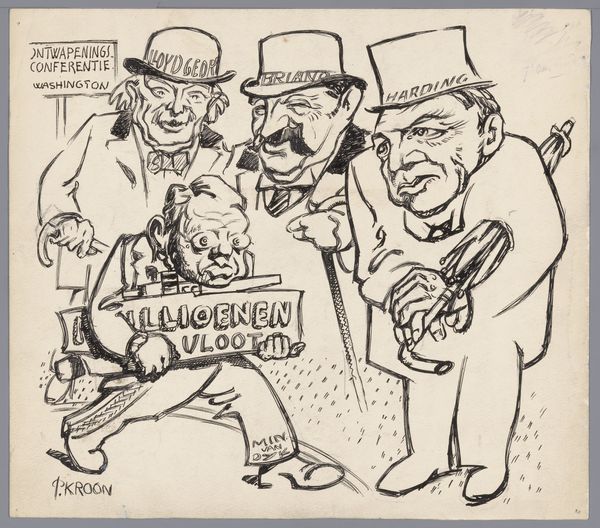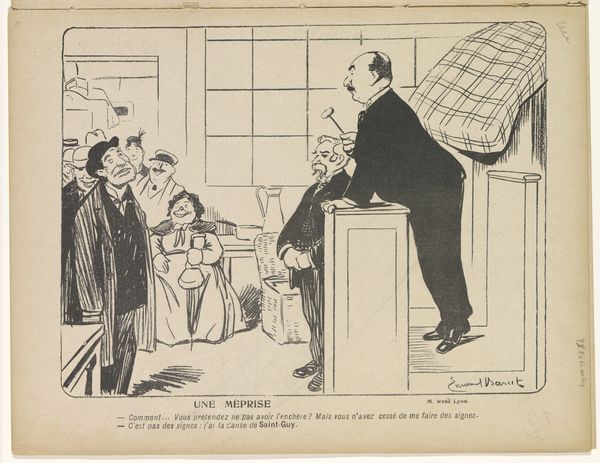
drawing, ink, pen
#
drawing
#
comic strip sketch
#
narrative-art
#
pen sketch
#
caricature
#
soviet-nonconformist-art
#
cartoon sketch
#
personal sketchbook
#
ink
#
sketchwork
#
ink drawing experimentation
#
pen-ink sketch
#
sketchbook drawing
#
pen
#
storyboard and sketchbook work
#
sketchbook art
#
modernism
Dimensions: height 250 mm, width 210 mm
Copyright: Rijks Museum: Open Domain
Curator: Look at this pen and ink drawing from somewhere between 1918 and 1924, called "Lenin asks for Help." It’s credited to Patricq Kroon, part of the Soviet Nonconformist art movement. Editor: Immediately I see it’s a political cartoon, a fairly rough sketch actually, full of caricature and… a plea, almost childlike in its simplicity. Very direct. Curator: It's definitely pointed. We've got Lenin gesturing dramatically, looking rather grumpy, in front of two figures. One is holding a sign for "IVV. Hulp Honce" — begging for help, it seems. The other stands grimly behind them. It feels deeply cynical, wouldn't you say? Editor: Cynical, sure, but also rooted in material reality. The "IVV" refers to an international association and the "hulp" speaks to aid; we're looking at the economics and international relations, rendered as farce. Think about the materiality of need – here, expressed through desperate lettering, the ink itself conveying urgency. It lays bare the supposed ideals. Curator: Good point. And the line work! It's so raw. Kroon's hatching and the exaggerated features definitely amplify that feeling of unrest. Look how crudely Lenin's boots are rendered! But this almost crude quality feels so intentional. What do you make of the figure in the back? Is that meant to represent someone in particular? Editor: Could be. My inclination, thinking about the materiality of power at play in post-revolution Russia, is to ask, "Who is *really* benefitting here?" Whose hands are clean and well-manicured? Who benefits most from this begging? Curator: Right, this makes the viewer question the entire infrastructure of supposed aid. I'd bet that’s part of the intention here: To stir feelings against any and all powers involved at that time. A little anarchic energy. Editor: Indeed. A subversive energy is here embedded in this image by way of readily available drawing materials—ink and pen—which democratize both process and messaging. Curator: It's interesting to see such an unpolished piece making such a powerful, emotional impact. To be honest, I think, in the end, this drawing helps humanize history itself! It goes beyond dogma. Editor: Agreed; I also appreciate that the sketch-like nature doesn't disguise the hands and labor necessary to make the cartoon; thus the actual making cannot be fully divorced from this piece.
Comments
No comments
Be the first to comment and join the conversation on the ultimate creative platform.
